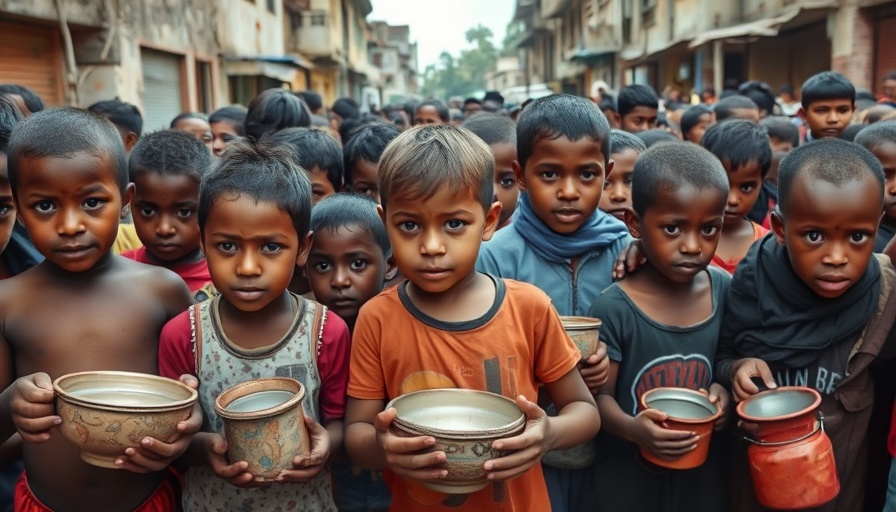
Gaza's Hunger Crisis: An Unfolding Tragedy
The heartbreaking images of emaciated children in the Gaza Strip starkly illuminate the hunger crisis plaguing the region. One particular scene remains etched in the minds of onlookers: a six-year-old girl with ribs protruding from her frail body, her malnourishment a grim indicator of the broader humanitarian catastrophe. The conditions have reached a point where children are limited to just a few vegetables per day, questioning the very essence of survival.
Impact of Israeli Blockades on Food Aid
For an agonizing 80 days, Israel imposed a blockade that halted the entry of food, fuel, and medical supplies into Gaza in an effort to pressure Hamas regarding hostage negotiations—a politically charged strategy that has backfired into a humanitarian disaster. The recent trickle of aid allowed by Israel, while a crucial development, has proven insufficient to address the dire needs of the population. The reopening of bakeries is an encouraging sign, but for the majority of Gazans, the hunger persists unabated and desperate.
A Grimmer Reality for Families
Families in Gaza confront harrowing choices daily. The story of Najwa Hussein Hajjaj, a six-year-old girl who has lost a staggering 42% of her body weight, illustrates the grave consequences of this crisis. She requires special meals due to a medical condition but faces scarcity rather than the support necessary for her survival. As parents scrounge for food, the emotional toll weighs heavily on them, showcasing a transformed reality where basic needs are no longer guaranteed.
Humanitarian Responses: An Evolving Landscape
International humanitarian organizations are desperately seeking solutions amid these crippling conditions. Recent distributions of limited food supplies offer a semblance of hope, but they are not a panacea. Aid workers echo a critical sentiment: the situation in Gaza is deteriorating rapidly, and relief efforts need bolstering to avoid an impending famine. The fragile infrastructure severely hampers the response, requiring a concerted push from global partners to avoid catastrophic outcomes.
Personal Stories: The Real Face of Hunger
Each child suffering from malnutrition highlights a story of endurance against overwhelming odds. The resilience of families enduring such conditions becomes a beacon of hope amidst despair. Community kitchens, though overcrowded and under-resourced, stand as testament to the will of individuals to survive and support each other in their most desperate times. It is through these personal narratives that the impact of this crisis resonates so deeply, transcending headlines and stirring international consciousness.
Looking Forward: What Needs to Change?
The nexus of political strife and humanitarian need calls for urgent reforms. The blockade strategy invites scrutiny, raising questions about its efficacy and morality in the face of human suffering. Advocacy for sustainable food security in Gaza has never been more critical. Diverting attention to humanitarian aid and facilitating open access to resources could bring a more stable future for these beleaguered families.
With the global community now more aware than ever of the plight facing Gaza’s children, it becomes essential that discussions shift toward actionable insights and global responsibility. Understanding how intertwined political decisions affect real human beings fosters a compassionate approach to addressing this crisis, ensuring that awareness translates into action.
In facing the hunger crisis in Gaza, we are reminded of the fragility of life and the power of community to overcome adversity. Now is the time for informed action and sustained global engagement to usher in a future where children are nourished, parents can provide, and hope is a reality rather than a distant dream.
 Add Row
Add Row  Add
Add 




 Add Row
Add Row  Add
Add 

Write A Comment